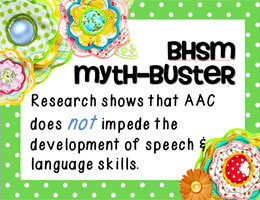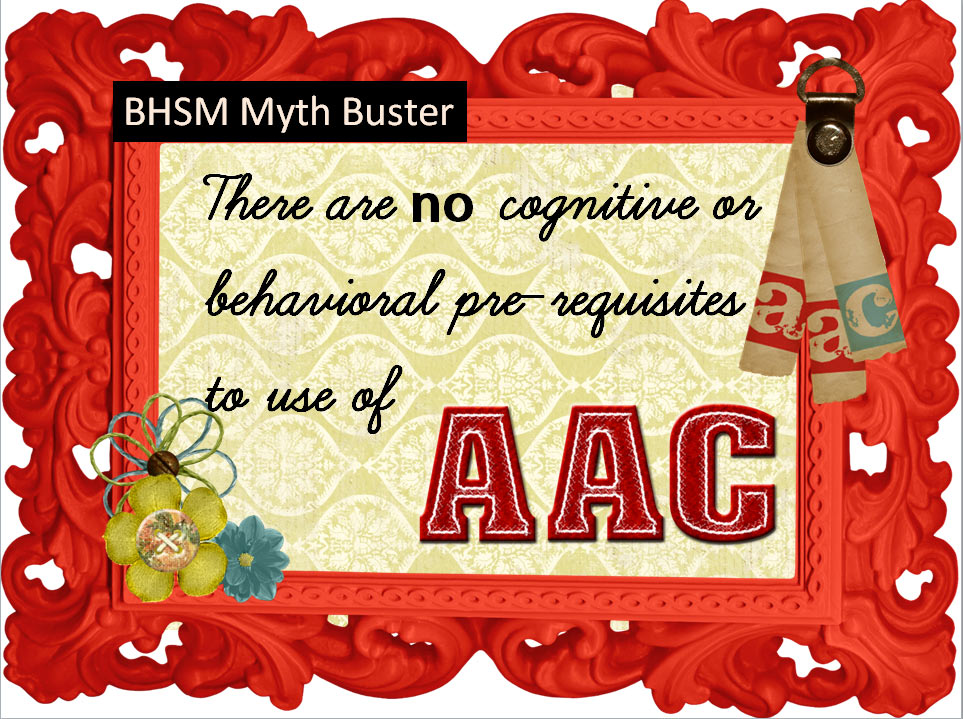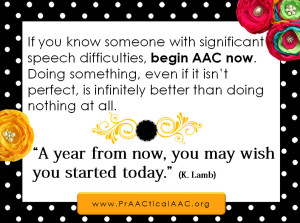Note: A downloadable .pdf version of this is avaiable here.
"My 5 yr old has a decent vocabulary but is fairly unintelligible. Her SLPs don’t think it’s time for an AAC system yet (they see it as a failure), but the specialty clinic says it’s time…past time…"
--------------------
"My 4 yr old has been in speech therapy for years (apraxia + genetic disorder)…I took him for an AAC evaluation and they said he would benefit from some form of AAC device but would not recommend anything specific. My insurance will not cover anything unless the therapist will fill out the paperwork, but his SLP wants to wait and keep trying to make him a verbal communicator. I’m trying to get AAC in place so that I can communicate with my son but keep ending up nowhere. I want to know what he wants to say…"
--------------------
These are two (of many) snippets of posts from parents I have seen in Facebook groups in just the past couple of months. These children and families are having a difficult enough journey – why are we making it 1000 times more difficult and confusing? The knowledge exists. The technology exists. The expertise, therapy and implementation strategies exist. Yet, somehow we are failing to connect the knowledge, technology, expertise, therapy, and follow through with those who need and would benefit from it. We need to do better.
 image created by PrAACtical AACWe need to do myth-busting (e.g. AAC does not inhibit speech development). We need to educate and raise awareness. We need to spread the word. We need to connect anyone who struggles to communicate, for any reason, to the supports and technology that can augment their communication abilities and/or provide an alternative means to communicate for as long as they need/benefit from it. There is no one right answer for everyone; needs change over time. Yes, ideally we would love to see all children able to speak. But the end goal is COMMUNICATION, not simply speech.
image created by PrAACtical AACWe need to do myth-busting (e.g. AAC does not inhibit speech development). We need to educate and raise awareness. We need to spread the word. We need to connect anyone who struggles to communicate, for any reason, to the supports and technology that can augment their communication abilities and/or provide an alternative means to communicate for as long as they need/benefit from it. There is no one right answer for everyone; needs change over time. Yes, ideally we would love to see all children able to speak. But the end goal is COMMUNICATION, not simply speech.
We teach typically developing babies and toddlers sign language (“Baby Sign”) – one form of AAC - and do not worry their speech and language development will suffer. They still babble and learn to speak  image created by PrAACtical AAC(if possible for their bodies). We do it because they have things to say before their speech systems are developed enough to speak; to reduce frustrations. Why, then, are we so hesitant to implement AAC systems once a child has a diagnosis/delay/disorder? The answer has more to do with us than the child.
image created by PrAACtical AAC(if possible for their bodies). We do it because they have things to say before their speech systems are developed enough to speak; to reduce frustrations. Why, then, are we so hesitant to implement AAC systems once a child has a diagnosis/delay/disorder? The answer has more to do with us than the child.
Right now, the 4 and 5 year olds highlighted above are being robbed of their right to functional communication in the here-and-now. Their language development is being unnecessarily impeded. They are enduring preventable frustration because they have no effective/efficient way to share their wants, needs, thoughts, feelings, stories with anyone they meet…all because a gatekeeper person has decided to hold out to see if speech will develop. What we as humans need most is the ability to COMMUNICATE and feel heard/understood – not the ability to speak.
Be part of the solution. If you are a professional and encounter a child with difficulties communicating – for any reason – please refer them to a communication specialist (speech-language pathologist). If you are a speech-language pathologist uncomfortable with or with minimal knowledge of AAC, please refer to or consult with a colleague with expertise in AAC…and educate yourself. If you are a parent with a child who is struggling to communicate – for any reason – trust your gut and seek help. Because communication is a basic human right.
